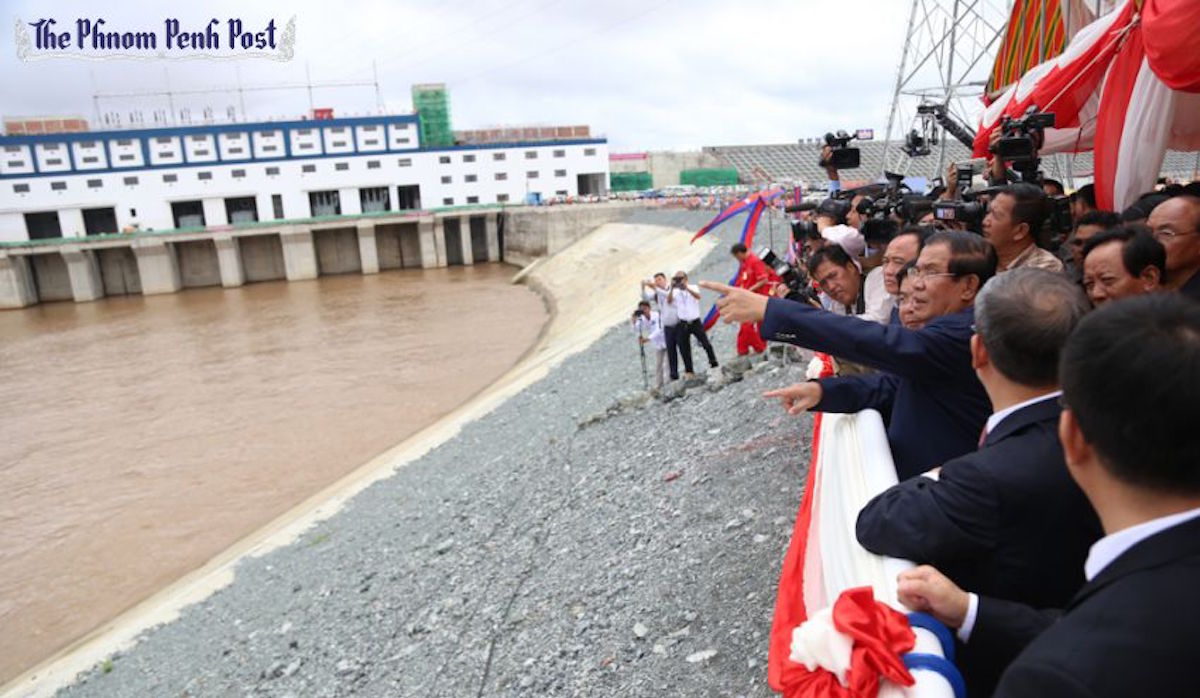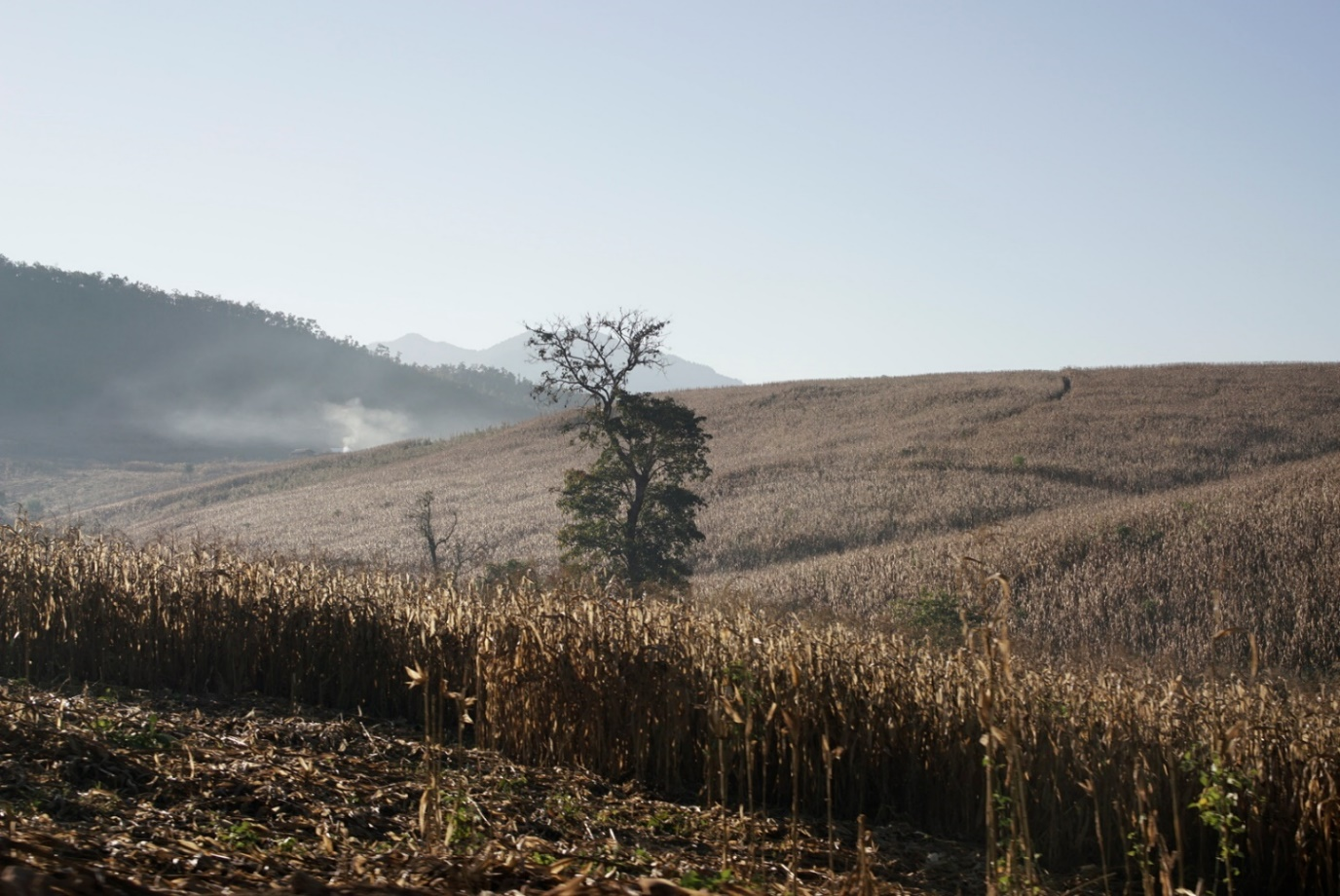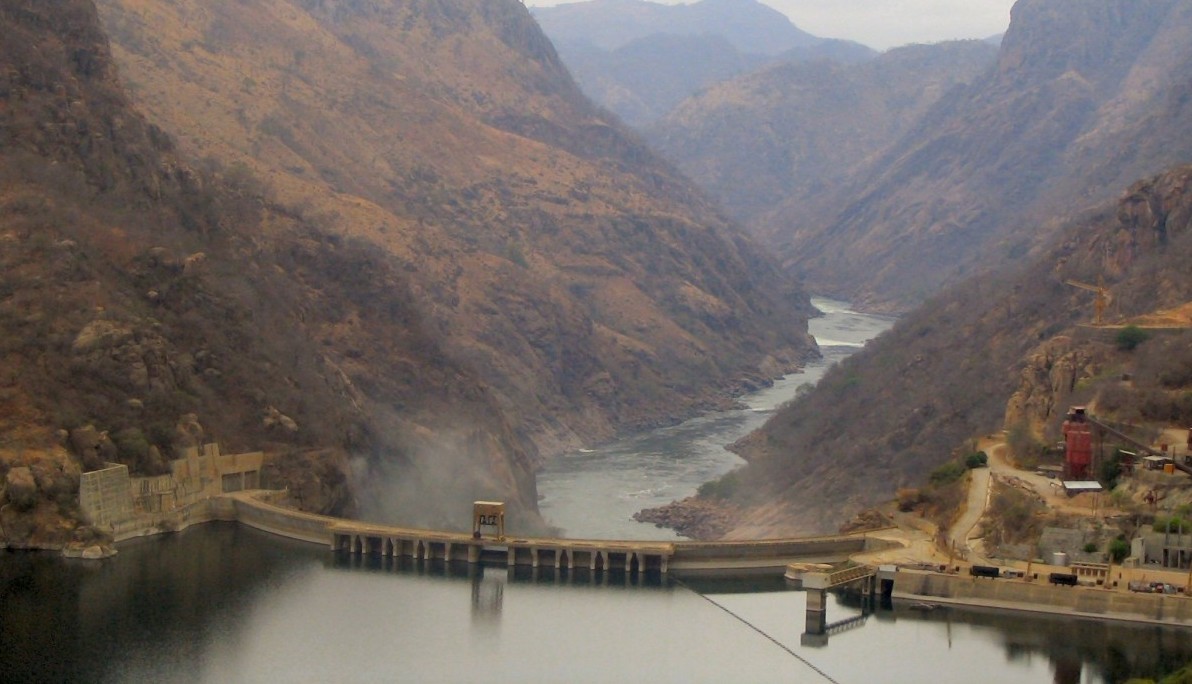The floodgates of the largest and most controversial dam project in the country’s history officially closed yesterday at an inauguration ceremony presided over by Prime Minister Hun Sen, who took aim at environmentalists, ambassadors and NGOs in a wide-ranging speech.
During his one-hour address, the prime minister said the Lower Sesan II Dam, near the border with Laos in Stung Treng province, would lower electricity costs and put the Kingdom on its way to hooking up every village in the country to the electricity grid by 2022.
“There is no development that doesn’t have an effect on the environment,” Hun Sen said. “It’s just a matter of more or less. But it requires consideration of whether we should or should not do it.”
The dam’s first turbine is expected to begin generating electricity by the end of November, with the rest expected to be fully operational by 2018.
A joint project between China-based Hydrolancang International Energy, Vietnam-based EVN International and Cambodia’s Royal Group – chaired by Oknha Kith Meng – the dam will be privately operated before being handed over to the government after 40 years.
The Ministry of Mines and Energy said yesterday that the company will sell the electricity at a fixed rate of $0.07 per kilowatt hour, significantly less than national rates currently as high as $0.20.
However, the $800 million, 400-megawatt dam was controversial from the start, drawing protests from displaced locals and raising alarm among environmental experts.
Hun Sen dismissed those environmental concerns yesterday, criticising “radical environmentalists” and pointing out the explosive demand for energy in Cambodia, which has the most expensive electricity in the region.
“[Mother Nature] keeps causing problems on every issue,” he said, referring to the recently dissolved environmental NGO. “If you do like this, how can we develop? We cannot do this or that. Coal and kerosene production, they said that it creates smoke. Producing electricity, it affects the environment.”
Also, the China Daily repots: Chinese-built biggest dam in Cambodia to start operation in November
STUNG TRENG, Cambodia — The 400-megawatt Lower Sesan II Hydropower Plant, which is Cambodia’s biggest hydropower dam so far, will start operation in November after almost four years of construction.
Cambodian Prime Minister Samdech Techo Hun Sen and Chinese Ambassador to Cambodia Xiong Bo presided over a ceremony to close the dam’s water gates on Monday.
According to a report by Cambodian Minister of Mines and Energy Suy Sem, the plant has eight turbines and each turbine has installed capacity of 50 megawatts.
The construction of the whole project is almost completed, as the first turbine will be put into operation in November, and all of the 8 turbines will be fully operational in October 2018, he said.
The project is a joint venture among China’s Huaneng Hydrolancang International Energy holding 51 percent of the stake, Cambodia’s Royal Group owning 39 percent and Vietnamese EVN International Joint Stock Company possessing 10 percent.
The project is a concessional contract of a 45-year build-operate-transfer (BOT), of which, 5 years for construction and 40 years for operations, the minister said, adding that the plant is estimated to produce 1.9 billion kilowatt-hour per year and the electricity will be sold to the Electricity of Cambodia at the fixed price of 6.95 cents per kilowatt-hour.
The plant could generate tax revenue about $30 million per year when it is fully operational.
Speaking during the closure ceremony of the water gates, Cambodian Prime Minister Samdech Techo Hun Sen said the project is a new achievement in the development of energy sector in Cambodia.
“I can say that it is the biggest-ever hydroelectric power dam in Cambodia,” he said.
Hun Sen said since the past until the present, Cambodia’s northeastern region, including Stung Treng, Kratie, Ratanakkiri and Mondolkiri provinces, had relied on electricity mainly imported from neighboring Laos.
“But from now on, especially when the first turbine starts operating, residents in these provinces will have access to long-term and reliable electricity with cheap prices,” he said.
The Lower Sesan II Hydropower Plant is 56.5 meters tall and covers a 36,000 hectare plot. The project has affected 860 families in six villages. To date, 752 families, or 88 percent of them, have accepted compensation and relocated to new villages.
“There is no any development in the world that does not affect environment; it’s just small or big impact only,” the prime minister said. “This project will provide great benefit to socio-economic development and poverty reduction, especially in the northeastern region.”
Meanwhile, Hun Sen expressed his gratitude to China for always supporting Cambodia in socio-economic development.
Huang Yongda, president of China Huaneng Group, the parent company of Huaneng Hydrolancang International Energy, said the project was a testament to the fruitful cooperation between China and Cambodia under the framework of the Belt and Road Initiative.
“This is also a key achievement in energy cooperation between China and Cambodia,” he said.
China is the largest investor in developing hydroelectric dams in Cambodia. According to the Cambodian Ministry of Mines and Energy, Chinese enterprises have invested for seven dam projects in Cambodia.
The ministry said the total capacity in Cambodia last year was 2,008 megawatts, including 1,592 megawatts taken from hydropower plants, coal-fired power plants, oil-fueled power plants,and solar power plants.
By June 2017, the Cambodian government had expanded electricity to 11,195 villages nationwide, or about 79 percent of the kingdom’s total villages, the ministry said, adding that a total of 1.98 million households were also connected, or 60.4 percent of the kingdom’s 3.28 million households.





